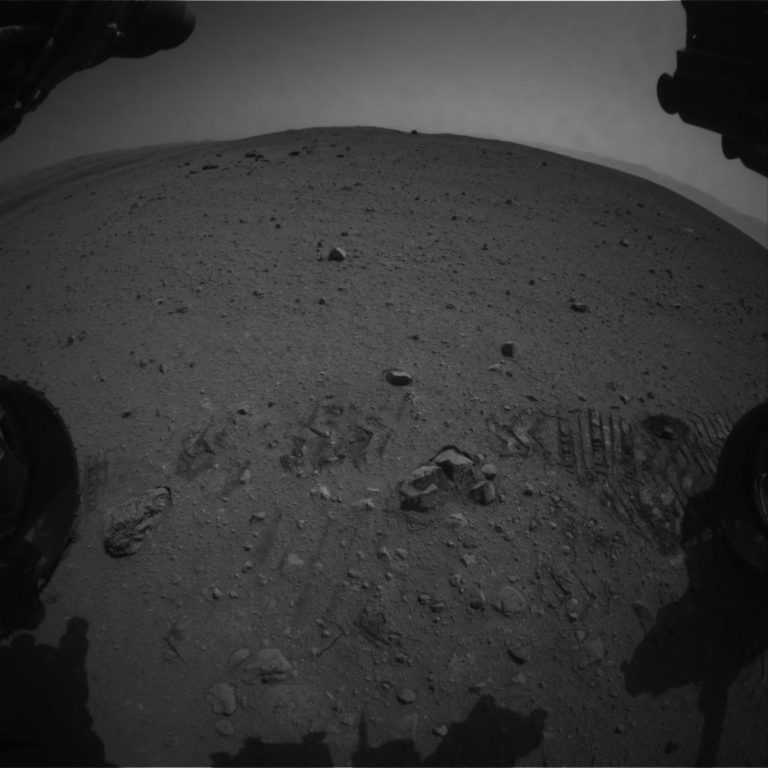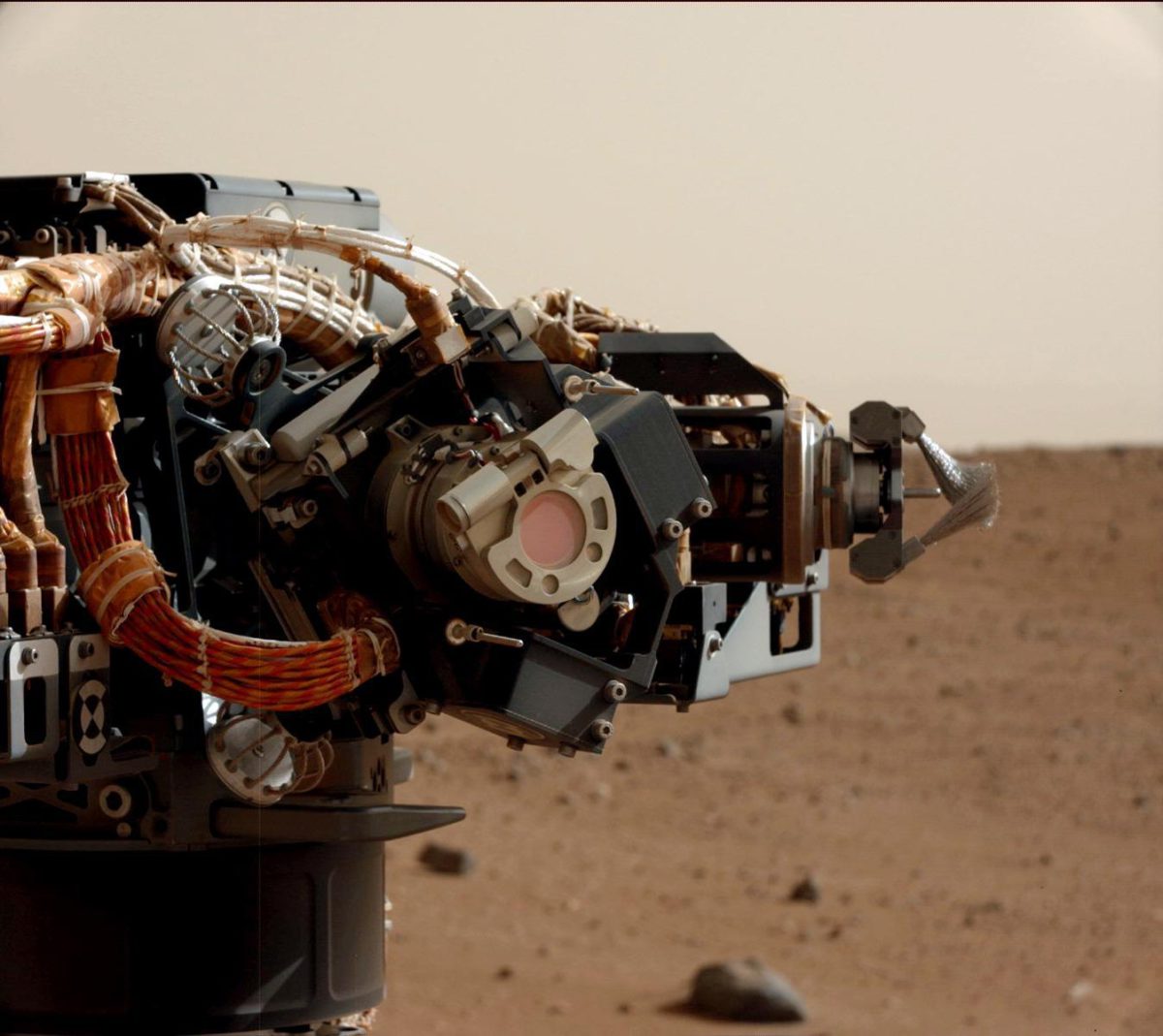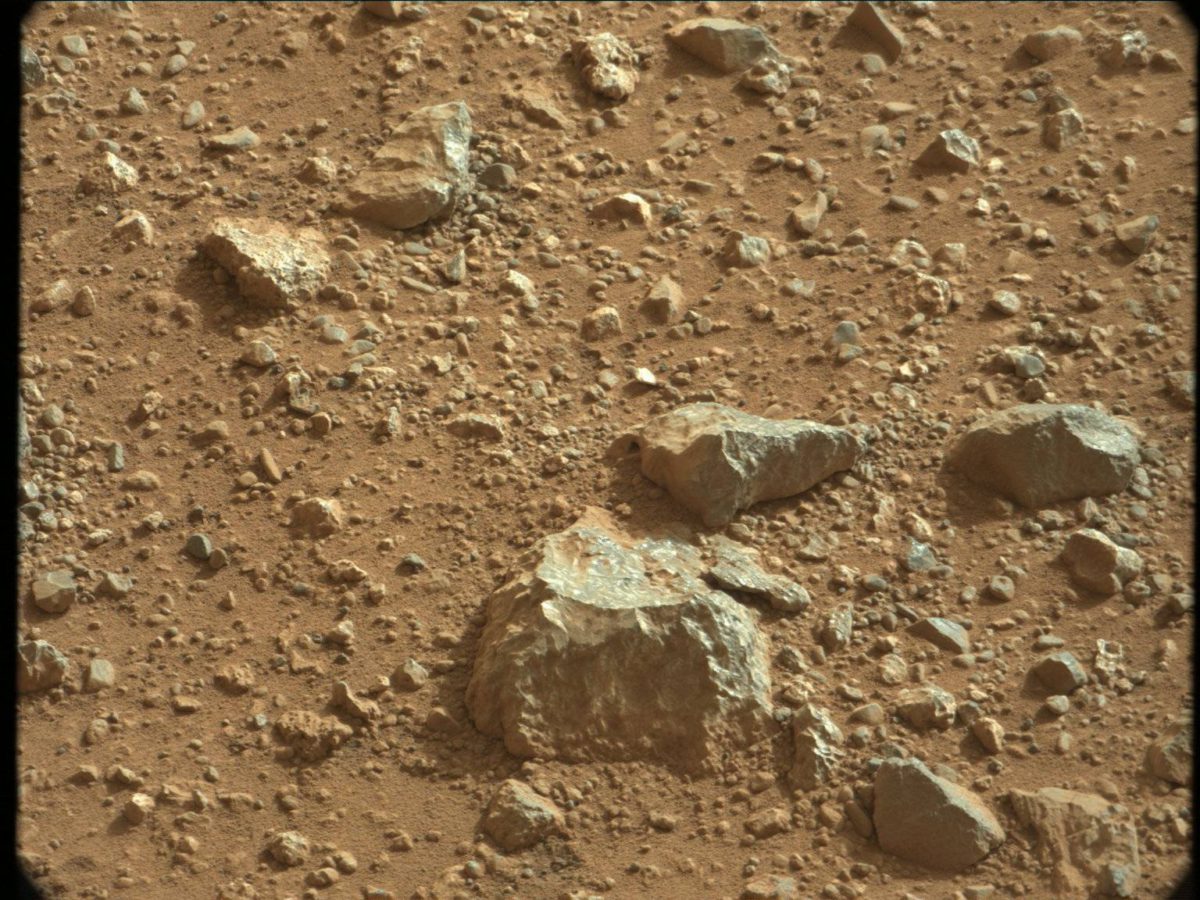Emily Lakdawalla • Sep 06, 2012
Checking in on Curiosity after sol 30
There was a Curiosity press briefing this morning, to mark the end of "Intermission" and the beginning of "Commissioning Activity Phase (CAP) 2." To review what these mean:
- CAP 1A was sols 1-8 and included landing, initial checkout, and the flight software update. A full Mastcam panorama was taken on sol 3.
- CAP 1B was sols 9-16 and included the testing and commissioning of the remote sensing instruments including Mastcam and Chemcam. There were Mastcam panoramas of the mountain on sol 13. CAP 1B ended with the first drive on sol 16.
- Intermission was sols 17-29. Curiosity began driving toward Glenelg on sol 22 and has now driven more than 100 meters. There were Mastcam-100 panoramas of the mountain on sols 19 and 23, and a much larger Mastcam-34 pan on sol 23.
- CAP 2 began on sol 30 and will last for 7 or 8 sols. During this period, Curiosity will check out the arm's positioning and prepare for contact science with MAHLI and APXS. It will not include the first soil scoop.
Here's a route map showing how far Curiosity has traveled:
But don't take a mapmaker's word for it, you can see it from space, with HiRISE. This photo was taken on September 2, or sol 27, before the rover had done that last 30-meter drive on sol 29. This makes, I think, the fifth time that HiRISE has photographed Curiosity. I don't know if they'll keep up that rate. I asked about this on Twitter and was told that it's up to the principal investigators on both Curiosity and HiRISE, but that HiRISE is capable of shooting the photos during communications passes, so there's nothing that impacts Curiosity's operations if HiRISE chooses to take more such photos.
It's always great to see rover tracks behind you, whether from the sky or from the ground.
There's only 100 meters on Curiosity's odometer so far, but there's already noticeable wear and tear on the wheels. Check out the teeny dents in the right middle wheel:

You can see how the wheels might acquire these little dings. Here's one likely ding-causing rock, which was pressed right into the ground when Curiosity drove over it, but that point is still protruding:

I asked about these dents at the press briefing, and they said that they were nothing out of the ordinary, that the testbed rover developed similar dents during its driving test. The engineer on the panel, Matt Robinson, called them "benign."
Now that CAP 2 is starting, we're going to see a lot of images of the arm in various poses with the turret rotated to various positions. This photo is a very special one, because it represents the first time that MAHLI has been photographed on Mars. And of course it was photographed with Mastcam, so the image is absolutely beautiful.

The photo that a lot of people have been impatient to see is this one in reverse: a photo from MAHLI of the Mastcams and the head of the rover. According to deputy principal investigator Aileen Yingst, there was one such image planned for sol 31 (which just finished), but it was to be taken through the dusty lens cap. We'll have to wait a bit for the okay to open that lens cover in order to get what will no doubt become Curiosity's Facebook profile photo.
Leo Enright asked a great question at the briefing: what is most exciting to you scientifically, so far? Joy Crisp answered that there were two things she was especially excited about: looking at the layered rocks of the mountain, and the amazing diversity of rock textures in the rocks nearby. She specifically mentioned a rock that contained light-colored clasts within a dark matrix. The sharp-eyed members of unmannedspaceflight.com suspect that this is an example of one such rock, and I agree, I'd love to see it up close:

Enright also asked if MAHLI could be used to view the damaged REMS boom. (This is one of two wind speed sensors mounted on little booms sticking out from the rover mast.) Michael Watkins answered that the REMS team had, in fact, made that request. However, the geometry is difficult; it's on a part of the mast that faces away from the arm. It would be awkward to position MAHLI to see the boom, and they could only get as close as about half a meter away, limiting the resolution of the view. So, Watkins said, they do not plan to attempt such imaging, in the short term anyway.
To summarize some recent science activities: SAM has been used twice, one of them to sniff Mars' atmosphere; Joy Crisp said they were still studying that data. They have continued to calibrate the ChemCam. Once they have okayed MAHLI for use with lens cap off, they will take a "belly pan," surveying the underside of the rover for the first time. And they'll photograph their calibration target as well as the APXS calibration target. Then they'll put the APXS on its calibration target (which is a polished slab of basalt) to have it measure rock for the first time since its arrival on Mars. I think it's kind of funny that we brought a piece of Earth basalt to a planet whose surface is made of basalt! --of course, the composition is slightly different, and that is, after all, what APXS is there to measure.
So we'll have another six sols' sitting still, and then they'll continue the drive toward Glenelg. They will probably make another stop along the way, though, if they encounter some loose, scoopable soil that they can try to grab for their first attempt to handle a sample. Joy said she thought their first drilling would probably come at Glenelg, but of course they have to get there and see what the rock actually looks like first.
Let’s Go Beyond The Horizon
Every success in space exploration is the result of the community of space enthusiasts, like you, who believe it is important. You can help usher in the next great era of space exploration with your gift today.
Donate Today

 Explore Worlds
Explore Worlds Find Life
Find Life Defend Earth
Defend Earth




